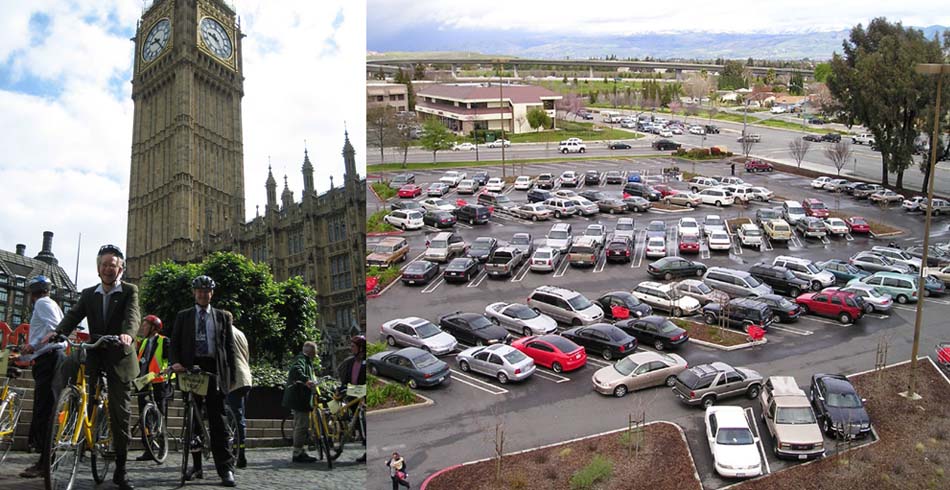Challenges in Creating Sustainable Cities
A recent article in The New York Times entitled “Across Europe, Irking Drivers Is Urban Policy” raises some fundamental issues about how to create truly livable and sustainable cities. Several European cities are tackling the issue of car management full force, resisting the notion that a city needs to accommodate cars to remain commercially viable. The model that has characterized how North American cities have developed since World War ll has greatly emphasized the vehicle. It is inconceivable that such a model can prevail today, knowing its tremendous impact on the environment and given the sophisticated public discourse about what makes a great place to live and work. Nonetheless, when we are designing commercial and mixed use developments in many California communities, we are often required to meet parking standards that are not in sync with the public discourse. In fact, by mandating a high minimum parking requirement (rather than a maximum), municipalities are providing a de facto incentive for citizens to drive a private vehicle as a means of commuting. This is especially relevant today in light of new California state laws that require cities to address climate change. It is well known that, in most municipalities, the largest factor in green gas emissions (CO2) is private car usage.
Parking ratios determination is probably one of the most misunderstood aspects of planning. Parking requirements mandated by a given municipality are often based on precedents from other municipalities. Most of the time the underlying assumptions used in the original parking requirements are unknown to most, and thus difficult to challenge. It is critical to conduct a site specific study assessing all potential modes of transportation and potential carpooling to determine what is the appropriate amount of parking needed. Incentives towards promoting sustainable forms of transportation should be a key element of any planning regulation.
Cities like London and Montreal have taken bold step towards making cycling a true alternative form of commuting. In some areas of London, cyclists overtake rush hour drivers and dictate the speed of traffic. Montreal developed an extensive network of safe and segregated bicycle lanes throughout the city, not dissimilar to those in Holland and Denmark. The program has proven to be so popular that the city now faces a serious cycling congestion problem during rush hours, which leads many bike riders to veer off the path and take their chances amidst the automobiles.
There is a clear need to put greater emphasis on infrastructure for bike mobility and storage. Once that infrastructure is in place, we can make our cities drastically more healthy and livable, while considerably reducing our carbon footprint.
Michel St. Pierre
Director, Planning and Urban Design Studio
